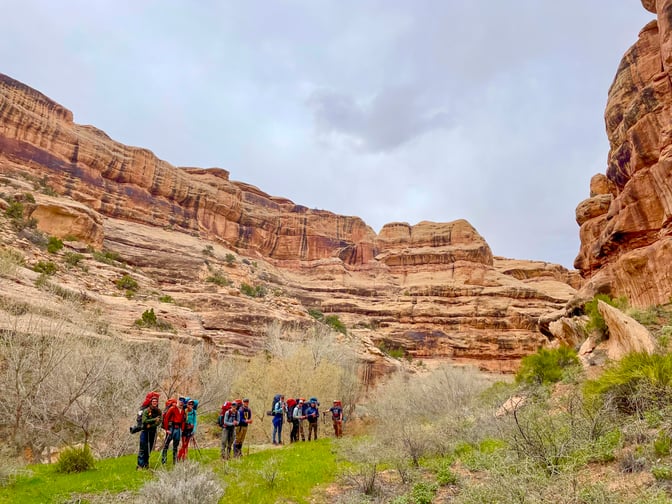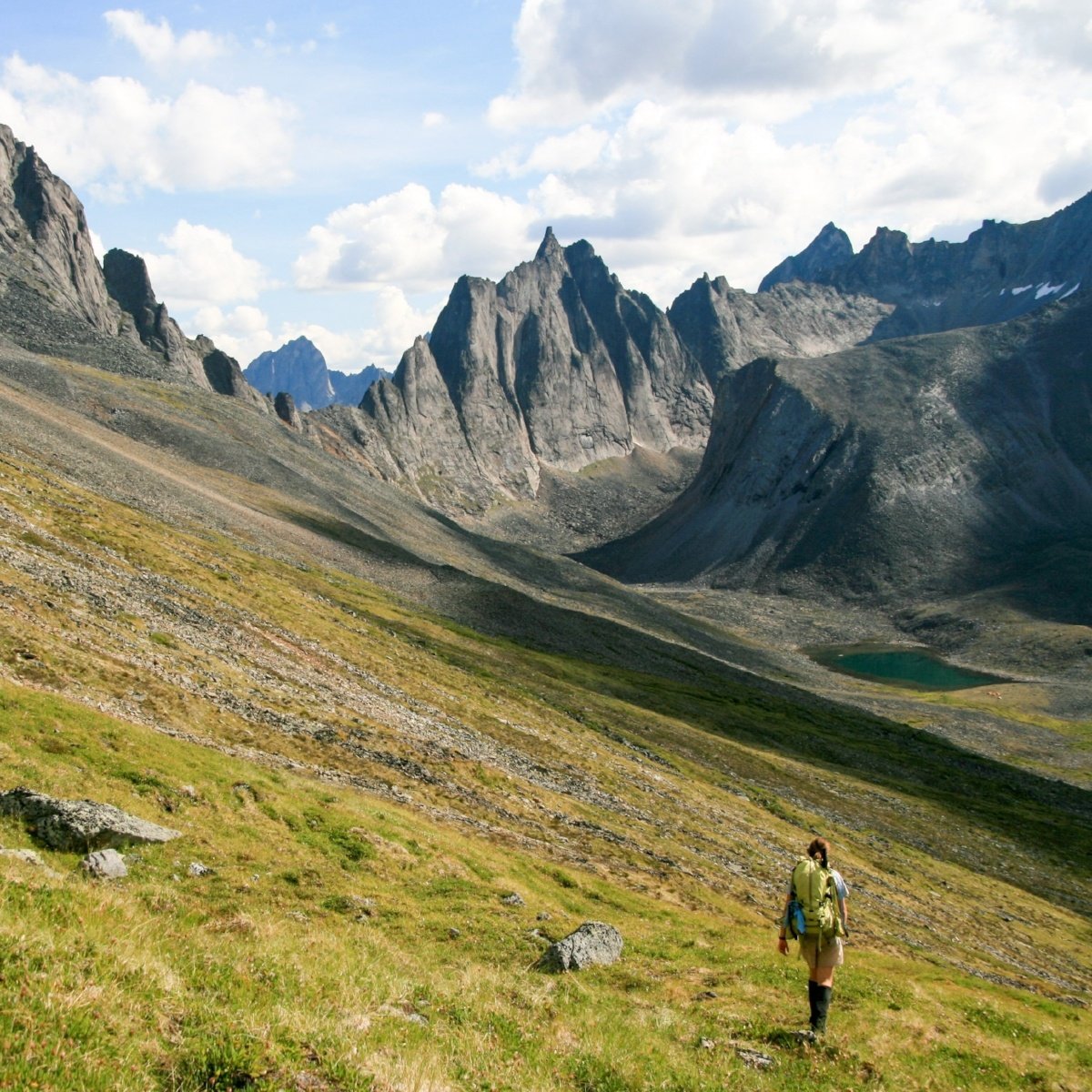
The Setting
It’s day 5 of a planned 12 day wilderness trip for teenagers in a western U.S. wilderness area. The closest road is 12 miles away, and the weather has been warm and dry for the whole trip—perfect for enjoying the mountains. You’re one of the trip leaders with current WFR training.
At 6:30 in the morning, just as your alarm goes off, some of your participants come and tell you that their tentmate is complaining of abdominal pain. So, you go to their tent to investigate.
SOAP Report
Subjective
The patient is a 17-year-old male who is complaining of abdominal pain. The patient’s tentmates woke you at 6:30 a.m. and said the patient had severe belly pain. Patient states the pain began yesterday at 10:00 a.m. as “a bad belly ache cramping-like” but is now “sharp.” He thought it was indigestion. It persisted all night and became “really uncomfortable” about 10:00 p.m. last night. The pain is across the lower abdominal quadrants, does not radiate, and is presently an 8 on a 1-10 scale.
Objective
Patient Exam
Patient is obviously uncomfortable from the pain. Patient states the pain is worse when he walks, especially when he walks down hill or hops. There is no point tenderness or rebound pain. No signs of injury or rigidity to the belly.
Vital Signs
|
Time |
06:45 hrs |
07:15 hrs |
08:00 hrs |
|
Level of Responsiveness (LOR) |
A+OX4 |
A+OX4 |
A+OX4 |
|
Heart Rate (HR) |
84, strong, regular |
84, strong, regular |
84, strong, regular |
|
Respiratory Rate (RR) |
16, regular, easy |
16, regular, easy |
16, regular, easy |
|
Skin Color, Temperature, Moisture (SCTM) |
Mucous membranes pink, skin warm, dry |
Mucous membranes pink, skin warm, dry |
Mucous membranes pink, skin warm, dry |
|
Blood Pressure (BP) |
not taken |
not taken |
not taken |
|
Pupils |
PERRL |
PERRL |
PERRL |
|
Temperature (T°) |
99°F oral |
not taken |
99°F oral |
History
|
Symptoms: |
Patient complains of nausea. No other complaints. |
|
Allergies: |
Patient denies any allergies. |
|
Medications: |
Patient denies any medications. |
|
Pertinent Hx: |
Patient denies any history of abdominal problems. |
|
Last in/out: |
Patient has been well hydrated, denies diarrhea. He ate very little for dinner last night. Reports normal bowel movement yesterday, no bowel movement yet today. Patient urinated clear urine this morning. He drank one cup of water this morning. |
|
Events: |
The patient’s tentmates are not ill. They say the patient moaned from the pain all night long, but did not want to wake up the leaders. The patient denies a blow to the abdomen. |
STOP READING!
What is your assessment and plan? Take a few minutes to figure out your own assessment and make a plan. Don’t cheat—no reading on without answering this first!

Assessment
This is acute abdominal pain that triggers our program’s evacuation protocols. The pain is increased with movement and jarring and has persisted for more than 12 hours.
Plan
Use the cell phone to contact the program base and request helicopter evacuation for evaluation of this patient by a physician. If the cell does not work, a party of four will hike to the trail head and call on a land line.
Patient will be kept as comfortable as possible. If evacuation is delayed clear fluids will be given if tolerated to prevent dehydration and shock. Otherwise nothing by mouth.
Anticipated Problems
Dehydration and shock. Continued pain and patient discomfort.
Comments from NOLS on Abdominal Complaints
Generalized abdominal complaints are common in backcountry settings. The NOLS data shows that 27% of reported illness is some type of gastrointestinal complaint, most often simple nausea, diarrhea and cramping, and another 7% is acute abdominal pain. Other studies of outdoor programs and expeditions also show that gastrointestinal complaints are common.
Gastroenteritis, the most common cause of abdominal discomfort, is typically cramping, intermittent and diffuse, not consistently reproducible by palpation but, at times, severe. It is often accompanied by vomiting and/or diarrhea, malaise, fatigue, muscle aches, and low-grade fever.
In contrast, the classic history of appendicitis is dull, constant, diffuse pain becoming localized to the right lower quadrant and associated with nausea or vomiting, lack of appetite, and low-grade fever. However, the presentation and course of appendicitis, or any abdominal complaint for that matter, is seldom classic or straightforward.
Good decisions are based on good information. The SOAP note is a useful tool to review and make sure you did a thorough assessment. You’ll notice the chief complaint of abdominal pain is assessed with the OPQRST model (onset, provokes/palliates, quality, radiate/region, severity and time), which examines and helps us understand the complaint.
Evaluating whether abdominal pain is a medical or surgical emergency, or is simple gastroenteritis that will resolve in the field, can be challenging. Outdoor leaders must be diligent in the interview and examination of this patient and focus not on trying to figure out what the problem is, but rather on identifying if the patient is presenting critical evacuation triggers. It’s an analytic process in which we use the Patient Assessment System (PAS) to gather the information. We then look for the evacuation triggers, which, if we follow our protocols, are a pre-determined decision.
NOLS’ Suggested Evacuation Guidelines for Abdominal Pain
Any patient who has:
- Pain inconsistent with a simple UTI or gastroenteritis
- Signs and symptoms or the possibility of pregnancy
A patient with:
- Persistent or worsening gastroenteritis (crampy, diffuse, or intermittent pain) over 24 hours, spiking fever, bloody diarrhea, or dehydration
- Inability to tolerate any oral fluids more than 24 hours, especially if accompanied by diarrhea volume losses, or fever.
Rapid evacuation for a patient with abdominal pain that is:
- Persistent for 12 hours, especially if constant, localized or worsening
- Accompanied by guarding, tenderness, distension, rigidity
- Produced or aggravated by movement, jarring or foot strike
- Accompanied by blood in the urine, vomit, or feces
- Accompanied by fever > 102°F (39°C)
- Accompanied by signs and symptoms of shock
End of the Tale
The cell phone connection worked this time and a helicopter was arranged. The UTM coordinates you read off the USGS topographical map were accurate, and a nearby meadow the size of a football field was an excellent landing zone. The weather held and by noon the patient was in the local emergency room.
After several hours of diagnostic work it was decided to take the patient to surgery where an inflamed appendix was removed. You feel good that your assessment and plan led to a good outcome for the patient, but you also know that many episodes of abdominal pain resolve without being identified. Even if this turned out to be one of those, you still made a sound decision, based on sound criteria and process.
Written By
Tod Schimelpfenig
As a NOLS Instructor since 1973 and a WEMT, volunteer EMT on ambulance and search and rescue squads since the 70s, Tod Schimelpfenig has extensive experience with wilderness risk management. He has used this valuable experience to conduct safety reviews as well as serve as the NOLS Risk Management Director for eight years, the NOLS Rocky Mountain Director for six years, and three years on the board of directors of the Wilderness Medical Society, where he received the WMS Warren Bowman Award for lifetime contribution to the field of wilderness medicine. Tod is the founder of the Wilderness Risk Manager’s Committee, has spoken at numerous conferences on pre-hospital and wilderness medicine, including the Australian National Conference on Risk Management in Outdoor Recreation, and has taught wilderness medicine around the world. He has written numerous articles on educational program, risk management and wilderness medicine topics, and currently reviews articles for the Journal of Wilderness and Environmental Medicine. Additionally, he is the author of NOLS Wilderness Medicine and co-author of Risk Management for Outdoor Leaders, as well as multiple articles regarding wilderness medicine. Tod is the retired curriculum director for NOLS Wilderness Medicine and is an active wilderness medicine instructor



